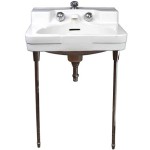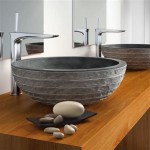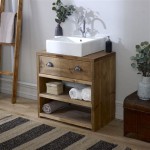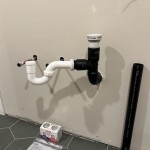Floating Bathroom Vanity vs Standard: A Guide to Choosing the Right Style
The bathroom is a sanctuary, a place for relaxation and rejuvenation. The design and style of the bathroom can significantly impact the ambiance and functionality of this space. One important element that often catches the eye is the bathroom vanity. Choosing between a floating vanity and a standard vanity can influence the overall aesthetics, storage capacity, and even the practicality of your bathroom. This article delves into the key differences between floating and standard vanities, highlighting their respective advantages and disadvantages to equip you with the knowledge necessary to make an informed decision for your bathroom.
Space Optimization: The Floating Vanity Advantage
Floating vanities, as the name suggests, are mounted to the wall, leaving the floor underneath unobstructed. This design element offers several advantages, particularly in terms of space utilization. Firstly, the absence of legs or a base creates an illusion of a larger space, a crucial consideration for smaller bathrooms. Secondly, the open floor space beneath the vanity eases cleaning and maintenance, making it simpler to sweep or mop underneath. This can be a significant benefit when dealing with water spills or splashes that are inevitable in a bathroom.
The open space beneath a floating vanity can also be utilized for storage purposes. A floating vanity can be combined with open shelving, baskets, or drawers to create a visually appealing yet functional storage solution. This approach not only helps maximize storage space but also adds a touch of contemporary elegance to the bathroom.
Visual Appeal: A Matter of Preference
Both floating and standard vanities can contribute to a visually appealing bathroom, but they ultimately create distinct aesthetics. Floating vanities often lend a modern, minimalist look to a bathroom. Their clean lines and seamless integration with the wall create a sense of spaciousness and contemporary elegance. On the other hand, standard vanities, particularly those with intricate carvings or traditional designs, can add a touch of classic charm or rustic warmth to a bathroom.
The decision of which style to choose depends largely on personal preference and the existing design theme of the bathroom. A floating vanity might be a perfect fit for a contemporary or minimalist bathroom, while a standard vanity could be a more suitable choice for a traditional or rustic bathroom. The choice ultimately comes down to personal preference and the overall design aesthetic one aims to achieve in the bathroom.
Functionality and Durability: Factors to Consider
While the visual appeal and space optimization are key considerations, the functionality and durability of the vanity are equally important. Floating vanities generally require more meticulous installation and may not be suitable for all bathroom configurations. The wall must be strong enough to support the weight of the vanity and its contents, and proper anchoring is essential to prevent sagging or instability over time. Therefore, consulting with a professional contractor during the installation phase is often recommended.
Standard vanities, on the other hand, are typically more robust and less susceptible to installation challenges. Their base provides a sturdy foundation, making them less prone to instability. However, the base can be a challenge to clean and maintain, especially if it is not properly sealed or if the bathroom floor is uneven. It is crucial to consider the potential for water damage and choose a vanity with a durable finish that can withstand moisture and spills.
Both floating and standard vanities come in various materials, each impacting their durability and price. Common materials include wood, laminate, and stone. The choice of material should be considered based on the overall design aesthetic, desired durability, and budget. For example, wood vanities offer a natural and classic look, while laminate vanities are more budget-friendly and often easier to maintain. Stone vanities, while more expensive, exude luxury and durability.

6 Reasons To Float Your Bathroom Vanity The Original Granite Bracket

What Are The Pros And Cons Of Floating Vanity Cabinets

Bathroom Vanities Floating Vanity Vs Standard

Bathroom Vanities Floating Vanity Vs Standard

Pedestal Sinks Vs Floating Vanities Which Are Better For Small Baths Appliances Connection

23 Wall Mounted Floating Vanity Cabinet Ideas Sebring Design Build

6 Reasons To Float Your Bathroom Vanity The Original Granite Bracket

10 Questions About Floating Bathroom Vanities Unique
.jpg?strip=all)
Bathroom Vanities Floating Vanity Vs Standard

9 Reasons To Float Your Vanity Delta Faucet Blog
Related Posts







